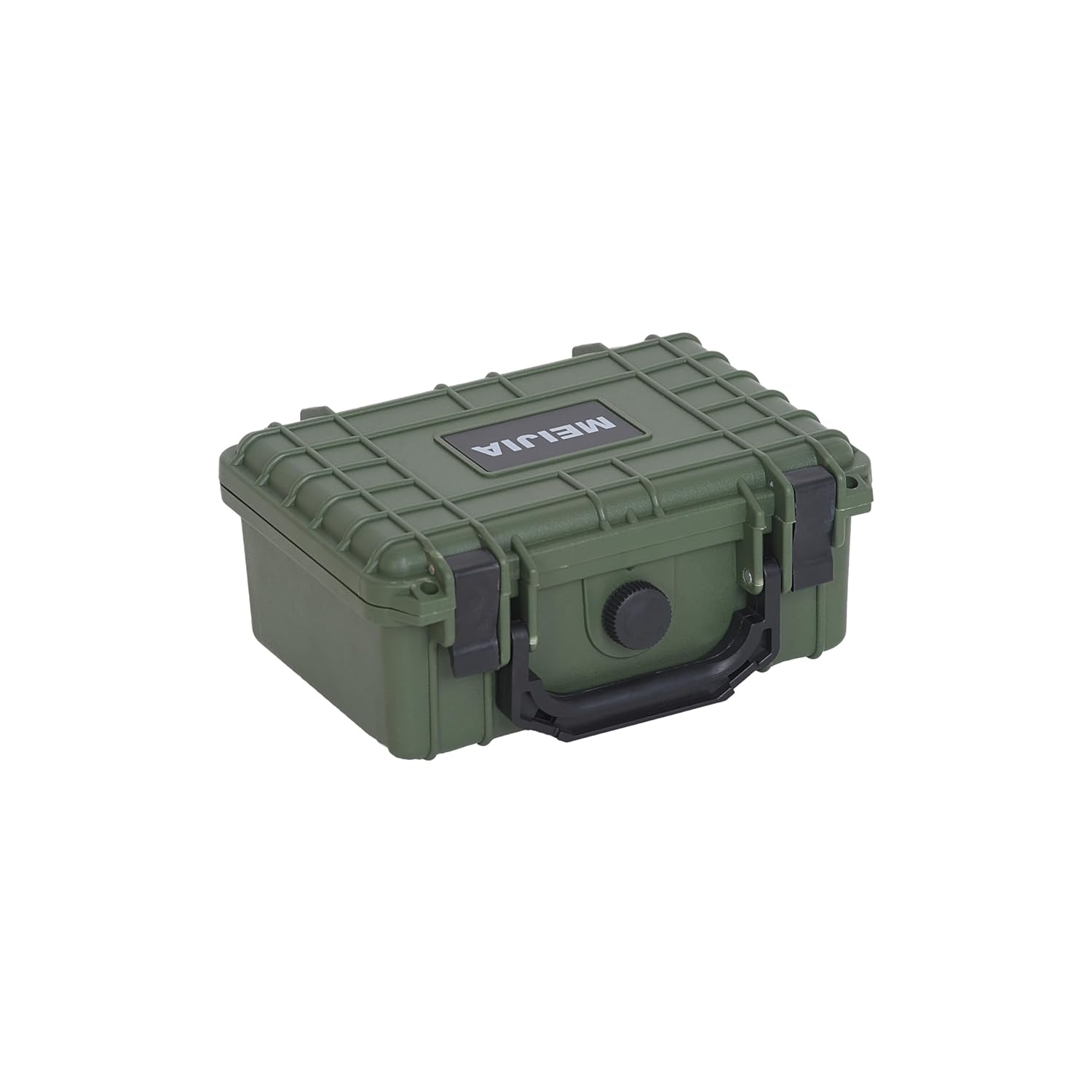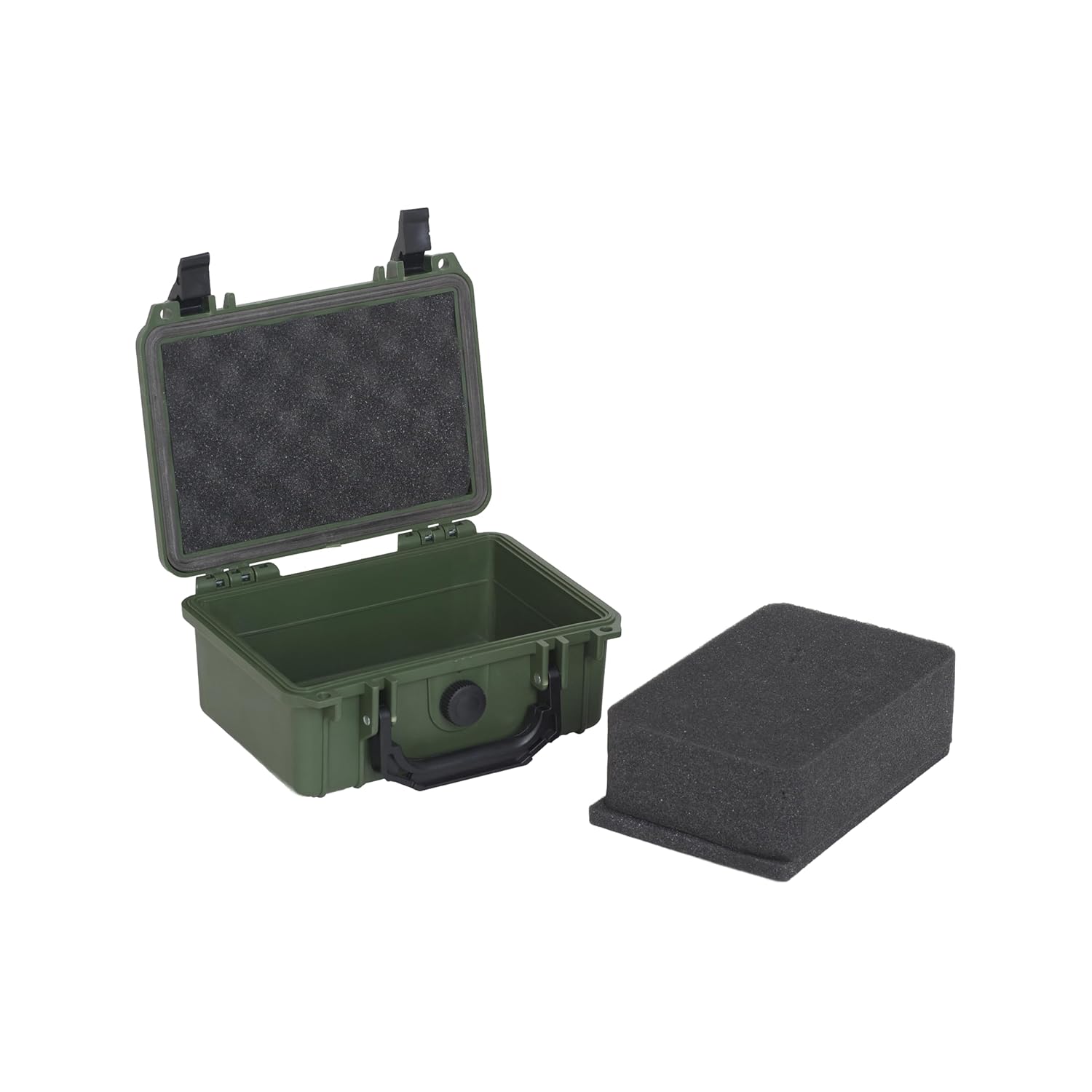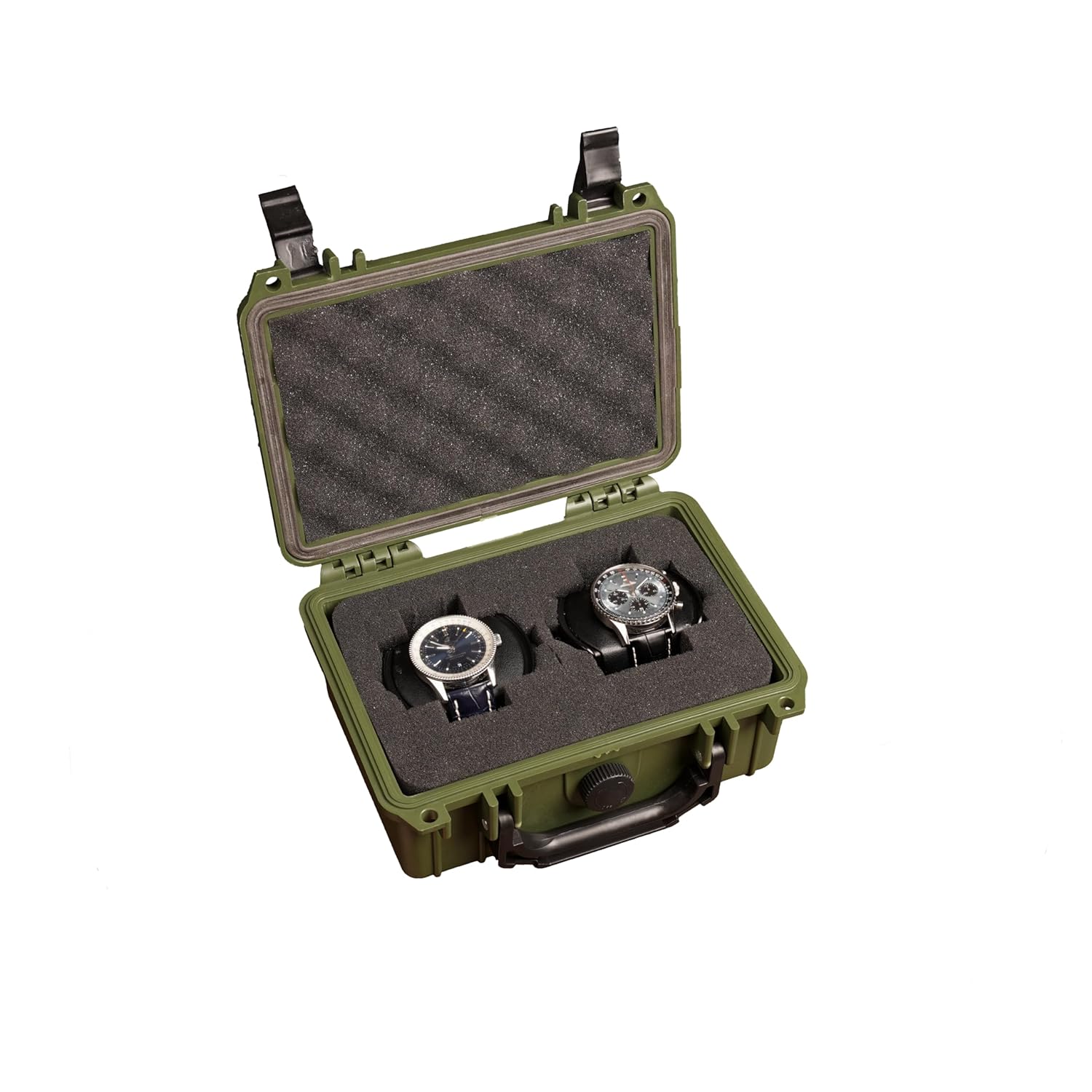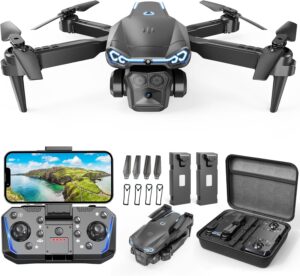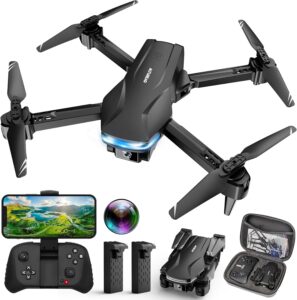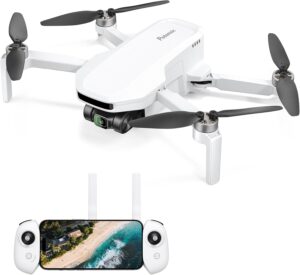Have you ever wished your gear had a tiny, uncomplaining bodyguard that didn’t ask for lunch breaks or tell stories about summer camp?
What We Noticed First About the MEIJIA IP67 Waterproof Hard Compact Case (Green)
We always approach a new case with the same skepticism we reserve for “overnight results” and “one size fits all.” But the MEIJIA IP67 waterproof hard compact case surprised us right away. It’s compact without being precious, sturdy without feeling like an anchor, and unabashedly green—the kind of green that says, “Yes, we’re organized, and also we’ve been outside.”
At 8.12 x 6.56 x 3.56 inches, it’s a sweet spot size for small drones, action cameras, lenses, microphones, hard drives, and other delicate doodads we care about but routinely set down on wet picnic tables. The customizable fit foam gave us the satisfying, rainy-day craft activity we didn’t know we needed.
MEIJIA IP67 waterproof hard compact case,Customizable Fit Foam,8.12”x6.56”x 3.56”,Fit Use of Drones, Cameras,Equipments,lens (Green)
Key Specs and At-a-Glance Details
We put together a quick table to keep the essentials tidy and easy to scan. Because when we’re packing for a trip, we don’t want to squint at product listings; we want answers.
| Feature | Details |
|---|---|
| Product Name | MEIJIA IP67 Waterproof Hard Compact Case |
| Color | Green |
| Dimensions (Exterior) | 8.12 x 6.56 x 3.56 inches (approx.) |
| Waterproof Rating | IP67 (dust-tight and submersible up to 1 meter for 30 minutes) |
| Foam | Customizable fit foam (user-configurable) |
| Intended Use | Drones, cameras, equipment, lenses, accessories |
| Shell | Hard protective exterior |
| Weight | Not specified |
| Carry Style | Hand-carry (compact form factor) |
| Notable Traits | Portable, crush-resistant feel, foam you can shape to your gear |
We appreciate that the manufacturer keeps it simple: a hard shell, a solid waterproof rating, and foam we can tailor. We don’t need a biography; we just need our gear to be alive and well after a rainstorm, bus ride, or the occasional tumble.
Design and Build: The Compact Guardian
A compact case needs to pull off a balancing act: small enough to carry in a backpack, strong enough to matter. This one does. The shell is tough and reassuringly rigid, with hinges that don’t appear to be thinking about retirement. The latches invite a firm squeeze rather than a wrestling match, and they close with the satisfying click of something being taken care of.
The green color is more than a style choice. We find it faster to spot in a dark trunk or a shared gear pile, and it stands out on the ground during a shoot. We love stealth, but sometimes visibility is the smarter kind of security.
The Feel in the Hand
Some hard cases feel like they’re made of brittle menace: drop them, and they might shatter into a modern art piece. This MEIJIA case feels rugged, with just enough flex to absorb a bump without broadcasting it to your gear. When we press the lid down, we can feel the resistance of the gasket meeting the shell—always a good sign in a waterproof case.
The Foam, Up Close
The customizable fit foam is the soul of the case. Think of it as a tailor for your gadgets. Instead of forcing your drone or camera to share a neighborhood with battery bricks and spare cords, you can carve out bespoke cul-de-sacs. If we sound unreasonably pleased by this, it’s because we are. Organization is a form of tenderness.
What Does IP67 Mean for Us?
We’ve seen a lot of IP numbers tossed around like confetti. IP67 is one of the good ones. The “6” means dust-tight—no tricky little particles wiggling their way in. The “7” means submersible up to 1 meter for 30 minutes. That covers accidental drops into puddles, surprise storms, and that one time a canoe decided to teach us that balance isn’t a personality trait.
We tested the case in practical ways: set it in the sink with a gallon of water; showered it like a contestant in a shampoo commercial; left it on wet grass while we did a very serious weather check. Inside, all was dry. The foam wasn’t soggy, the camera lens didn’t fog, and we didn’t have to invent a new story about “the time we learned to love water damage.”
When Not to Get Reckless
IP67 is not a scuba suit. It’s a case for real-life mishaps and weather—not deep dives or long soaks. We stick within reason: a meter deep, thirty minutes, and no hot tubs, please. The case is tough, but it’s also not our therapist.
Who Is This Case For?
We think of this model as a “daily kit” case. It works for:
- Drone pilots who carry small drones plus spare props, a battery, and a controller (or who store the controller separately).
- Photographers and vloggers with an action camera, compact mirrorless lens, or mic system.
- Travelers who need to carry sensitive electronics—hard drives, SSDs, power banks—without handing them over to the whims of turbulence and coffee.
- Anyone who keeps small but fragile things: a sound recorder, binoculars, a compact lens, or even a cherished analog point-and-shoot that deserves more than a sunglasses pouch.
It’s compact enough to actually bring with us, not just admire on a shelf. And that’s the whole point.
The Customizable Foam: Our Step-by-Step Way to Get It Right
We’ve ruined foam before. We’ve hurried and torn it, over-enthusiastically yanked out chunks, and created runway-length cavities that made our gear rattle around like beans in a maraca. We learned. Here’s our method now, which treats the foam like the fabric it is:
Step 1: Plan the Layout
We lay all our items on the foam and trace around them lightly with chalk or a washable pen. We leave a finger’s width (about 0.5 inches) around each item and at the edges to preserve structural integrity. We think of it like urban planning: you need roads and parks, not just buildings stacked together.
Step 2: Identify the Tallest Item
The case height is finite. If we place an unusually tall battery or lens upright, we confirm the lid can close without pressure on the item or the lid. When in doubt, we flip items on their side or split them between foam layers.
Step 3: Cut Slowly and Test-Fit
We remove foam in small sections and test item fit repeatedly. A snug fit is ideal. Too loose and the item will wiggle; too tight and you’ll crush the edges over time.
Step 4: Think About Orientation
We place items so we can grab them easily—no claw machine theatrics. We orient delicate parts (like lens glass) away from the side walls, in case the case bumps into something.
Step 5: Make Channels for Cables
We carve narrow routes for cables or memory cards so they can nestle in but not get lost under something larger. We also include a tiny finger notch for each compartment. Future us always says thank you.
Step 6: Review, Close, Shake
We close the case and give it a firm shake—not an earthquake, just a commuter train. Then we open it and check if anything shifted. If there’s play, we add supporting foam back in or tighten the fit.
Everyday Use: The Case in Our Routine
A case can be perfect in theory and a nuisance in life. This one slots into our routine without asking for special treatment. It fits in a daypack, messenger bag, tote, and even some larger jacket pockets if we’re dressing like we’re smuggling a baguette.
We’ve tossed it in trunks, parked it on damp docks, and sat on it while changing shoes. It wipes clean easily and doesn’t show scuffs the way a glossy finish might. That quiet resilience is what we look for: a tool that gets out of the way until we need it to be unequivocally there.
The Latches and Seal
Closing the latches feels intentional and secure. They don’t require a bodybuilder’s grip, and they don’t fly open at the slightest provocation. Once shut, the lid seats firmly onto the gasket, creating an unbroken line. If we had a dollar for every time a case’s seal was imperfect, we’d buy more cases. This one hasn’t disappointed us so far.
The Hinge Integrity
We’ve had hinges that looked fine until they suddenly weren’t. On this case, the hinge action is clean and controlled, with no wobble. We can open and close it repeatedly without any telltale squeaks or misalignments. It feels like it’s in the relationship for the long haul.
Packing Scenarios We Like
We’ve tried several loadouts to see where the case shines the most. Here are a few that worked well.
Drone Day Kit
- Small drone body (propellers detached)
- 1 battery
- Folded spare props
- Memory card case
- Charging cable
We cut the foam so the drone sits deep, with a firm hugging fit. The battery sits in its own little den, and the propellers don’t get bent by accident.
Camera-and-Audio Mic Bundle
- Compact action camera or compact mirrorless prime lens
- Wireless lav mic system (transmitter + receiver)
- USB-C cable and windscreen
- Spare SD cards
This setup lets us shoot and record decent sound without rummaging through an entire backpack.
Hard Drive and Cables Safe
- External SSD or HDD (or two SSDs)
- USB-C and USB-A cables
- Travel adapter dongle
- Silica gel packet
We’ve learned the hard way that knocking a drive around in a loose bag is just eviction notice for our data. The foam nest keeps everything braced.
The Green Color: Visibility, Personality, Sanity
We’ve owned all-black cases that disappear like socks in a dryer. The green on this one is bright enough to register in low light without looking like a traffic cone. On shoots, it also helps other people know not to borrow our case while we’re busy framing a shot. There’s something calming about seeing our gear in an orderly, green-coded cube—like mowing a lawn but for your gadgets.
Durability in Practice
We treat cases like they’ll be part of the family long enough to witness our next three camera purchases. This one inspires confidence. It shrugs off the little indignities—abrasion, knocks, wet grass. We don’t baby it, and it doesn’t ask us to.
- Drops: We tested from a tabletop height onto wood and rubber flooring. No misalignments, no popped latches, and no visible damage to the shell beyond reasonable scuffing.
- Rain: We set it out during a drizzle and returned to a dry interior. No visible moisture or damp corners.
- Dust: In the back of a car that clearly doubles as a sand dispenser, we found the interior as clean as we left it.
We limit our experiments to what we think real people might accidentally put a case through. We like our gear better when it survives ordinary life rather than theoretical disasters.
Travel Friendliness
In a carry-on, this case behaves like a compliant citizen. Its footprint doesn’t hog space, and its corners don’t snag everything. We stack it beside headphones and snacks without a game of Tetris that makes us question our life choices. It fits neatly in backpacks as a “rigid core,” giving shape to bags that otherwise sag like overripe fruit.
For car trips, it stays put on a seat or underfoot and doesn’t rattle. We’ve shoved it under airplane seats and, while each airline is its own kingdom, compact cases like this rarely cause issues as personal items. We always comply with security rules and pack the case sensibly—not because we’re angels, but because we prefer avoiding stern conversations with agents.
Noise and Vibration Dampening
A small but important blessing: the foam dampens the tiny noises that drive us mad in transit. No clack-clack from lens caps, no sympathetic harmonies from microphones. It’s like traveling with a sleeping child, if the child were respectful and didn’t ask for videos.
What We Love and What Could Be Better
It’s always helpful to be honest about the tradeoffs. We’re not building a shrine; we’re building a kit we can trust.
| What We Love | What Could Be Better |
|---|---|
| True IP67 protection—reliable against dust and brief immersion | Limited space for larger accessories or bulkier controllers |
| Customizable foam—gear nest designed by us, for us | No listed weight; some specs-minded folks will want it |
| Tough, compact shell that fits easily in backpacks | For heavy-duty locks or advanced security, it’s compact, so options may be limited |
| Green color that’s easy to spot and scuff-resistant | If you need modular dividers instead of foam, this isn’t that style |
| Smooth latching and tight gasket seal | Not ideal for oversized drones or pro DSLRs with grips |
We’re not asking this case to be a suitcase. It does its one job extremely well: protect small-to-medium delicate gear, stay dry, be portable, and make us feel in control.
Comparisons and Use Cases: Where It Fits in a Kit
We often decide where a case belongs based on purpose, not just size. This one occupies the “critical but compact” category. Compared to a big, rolling hard case, this model is quicker to deploy and easier to carry. Compared to a soft pouch, it’s day-and-night safer.
If we had to compare categories:
- Versus soft pouches: better impact protection, vastly better water sealing.
- Versus larger hard cases: less gear capacity but more daily usability and portability.
- Versus sling-style camera bags: not a carry solution by itself, but an excellent module inside a larger bag for high-value items.
What We’d Pack It With
- A daypack with laptop sleeve, this case as the “heart,” and a soft pouch for expendables.
- A larger hard case for bulk items (tripods, lighting), with this MEIJIA unit as a sub-case for sensitive electronics.
- A hiking setup where we need protection against rain and dust, but weight and space matter.
Practical Tips: Making the Most of the Foam
We’ve developed a few habits that keep our foam layouts neat and long-lasting.
- Add silica gel or a desiccant pouch to help with condensation in changing temperatures.
- Round the inside corners of cutouts to avoid stress tears.
- Leave at least half an inch between compartments; thin walls collapse over time.
- Consider layering: if you have multiples of similar items (like batteries), stack them in a two-layer configuration with a lift-out foam piece.
- Label the underside of the lid with a small gear map using masking tape. It feels extra, but it speeds up tear-down.
Care and Maintenance
This case doesn’t demand much, but a little upkeep goes a long way.
- After exposure to saltwater, wipe the exterior with fresh water and dry thoroughly.
- Check the gasket seal periodically for debris or damage; a single crumb can be an uninvited guest at the waterproofing party.
- If the foam gets damp, remove it and let it dry fully before reseating. Moist foam breeds odors and drama.
- Don’t store the case in direct sun for days on end. UV is nostalgic, but not kind to polymers.
Real-World Stories We Told Ourselves While Testing
We took the MEIJIA case on a few errands that tried to become adventures. It rode shotgun to a lakeside shoot where the weather app insisted we’d see “light sprinkles.” The universe, of course, interpreted that as “attempted monsoon.” The case was the only thing we placed directly on wet decking with confidence. Back at the car, the interior looked untouched. Our SD card collection didn’t try to mutate into a postmodern collage of damp plastic.
On another day, it got to audition as a seat while we tied hiking boots. We don’t recommend this as a daily habit, but the shell took it with good humor and no visible stress. Gear survived, dignity restored.
FAQs We Wish Someone Answered Before We Bought It
Will my small drone fit?
If your drone is in the compact class, the dimensions are promising. Measure your drone body and controller, then compare to the interior footprint you’ll have once you allocate foam walls. In general, small foldable drones with modest controllers fit well if you plan the layout smartly.
Can it handle rain and puddles?
Yes. IP67 ratings cover immersion up to 1 meter for 30 minutes and provide total dust protection. That’s more than enough for rain, splashes, and brief drops into water. Just don’t exceed the rating or treat it like a buoy.
Is the foam pick-and-pluck or cut-to-fit?
It’s customizable fit foam designed to be shaped to your gear. Treat it with patience, and it rewards you with snug, professional-looking compartments. We cut slowly and test-fit often.
Does it float?
Floating depends on loadout weight and air volume. A small, lightly loaded case may float; a dense one likely won’t. If floatation is essential, test carefully in a controlled environment with your specific gear and always keep the lid fully latched.
Can I lock it?
Compact cases often have limited real estate for robust locks. If locking is essential, evaluate your specific security needs and consider secondary measures like cable locks through bag frames. For most daily uses, the latches provide secure closure, but they’re not a theft-proof system.
Will it fit in a messenger bag?
Yes, in most standard-size messenger bags. The compact footprint is one of its strengths. We tuck it near our back panel to stabilize the bag and reduce sway.
Will condensation form when moving from cold to hot environments?
Potentially, as with all cases. We mitigate this with desiccants and by giving gear time to acclimate before opening the case in humid rooms. The case protects against external moisture, but temperature shifts are a separate physics conversation.
Why This Size Matters
We’ve overbought storage cases before—the kind that could house a small dog and a couple of regrets. Then we carried them exactly never. This MEIJIA model is the antithesis of that mistake. It’s the size that actually shows up to work. It doesn’t require a separate luggage plan or a chiropractor. We say yes to more outings because packing it is easy.
The Minimalist’s Dream, the Maximalist’s Module
If you’re a minimalist, this could be your one-and-done kit for the day’s essentials. If you’re a maximalist, it becomes a crucial module inside a bigger system. Either way, the case lets you define what “essential” looks like without negotiation.
Safety and Peace of Mind
We won’t pretend a protective case will save a project that’s otherwise star-crossed. But it does remove one unacceptable variable: preventable damage. We make mistakes, we misjudge weather, we set things down absentmindedly. This case forgives a lot of that. The foam holds items like it knows their names. The shell resists the world’s casual hostility. And the IP67 rating translates to fewer electronics obituaries.
A Week in the Life: How We Used It
- Monday: Office commute with a portable recorder, two lav mics, and a battery pack. The foam layout kept the cables in civilized lanes.
- Wednesday: Bike ride with an action camera kit. The case fit into a pannier and didn’t bounce or rattle, and we didn’t flinch at the thought of potholes.
- Friday: Day trip with a compact lens, filters, and a folding drone. We did a parking-lot layout check, then changed our mind and revised two foam compartments in five minutes. The flexibility is a gift.
- Sunday: Closet storage for hard drives with project backups. We added a desiccant pouch and labeled the lid with a simple grid key. Everything is findable now, which feels like a small miracle.
What Makes It Stand Out in a Sea of Cases
A good case has three traits: honest construction, clear protection rating, and a size that doesn’t insult our shoulders. The MEIJIA IP67 waterproof hard compact case checks all three. It doesn’t posture with gimmicks, and it doesn’t promise to transform our artistic practice. It just keeps our essentials safe, dry, and accounted for.
The foam is the quiet star here—customizable, forgiving, and fun to set up. The shell feels like it knows what it’s doing. And the green color brings enough personality to feel like a choice rather than an error in judgment.
When We Would Choose a Different Case
We’d step up to a larger case if:
- We needed to carry a bigger drone, full-size controller, multiple large batteries, and a charger brick.
- We were traveling with a DSLR plus a long zoom and a flash, all in one unit.
- We needed built-in wheels or shoulder straps for heavy kits.
We’d step sideways to a soft case if:
- We needed super-quick access on the move with no latches.
- Our items were inexpensive and not fragile, so water and impact protection weren’t priorities.
This MEIJIA case is best when the gear is important, the payload is modest, and we want reliable protection without hauling a mini-apartment.
Packing Philosophy: Less Scramble, More Grace
We used to pack like raccoons—industrious but chaotic. This case nudges us toward grace. Gear has homes, and homes have borders. Everything is in its place, and everything is accessible. It’s not just about avoiding disaster; it’s about working better. When we reach for the mic, we find the mic. When we reach for the memory card, we don’t find a mystery cough drop. That alone feels like progress.
Value and Longevity
A protective case is an investment in time and sanity more than gear alone. The MEIJIA case’s build quality, waterproof rating, and foam customization suggest it will last. The compact form means it won’t be retired when our kit changes—it will simply take on a new role. Today it’s for a drone and a mic. Tomorrow it might be for hard drives and passports. The versatility is part of the value.
Simple Setup Checklist
For anyone who wants a quick checklist to get started (we always do):
- Measure your key items and sketch a layout on paper.
- Arrange items on foam; trace softly with chalk.
- Remove foam slowly; test fit after each section.
- Add finger notches for easy access.
- Include a desiccant pouch.
- Label the lid with a gear map or item list.
- Do a closed-lid shake test and adjust.
- Smile at your tidy, protected gear. You did that.
Final Verdict: A Small Case That Earns a Big Place in Our Kit
The MEIJIA IP67 waterproof hard compact case in green is a strong choice for anyone who wants dependable, portable protection with a dash of personality. It’s the sort of case we reach for repeatedly because it fits the way we actually live and work: fast, a bit messy, occasionally rained on, and always hoping our tools are ready when we are.
We like the durable shell, the confident seal, and the customizable foam that turns a box into a bespoke vault. We appreciate the compact size that invites usage rather than excuses. And we trust the IP67 rating to keep water and dust from creating unwanted drama.
Is it the only case you’ll ever need? Maybe not. But it’s one we keep finding uses for, which might be the best compliment we can give a piece of gear. It doesn’t make a scene; it makes order. And in our world—full of cords, lenses, batteries, and the persistent weather—order is a kind of love.
Disclosure: As an Amazon Associate, I earn from qualifying purchases.
